|
Automatic
Rollout
or Peripheral Photography
Andrew
Davidhazy
Imaging and Photographic Technology School of Photo Arts and Sciences / RIT back to main articles page The making of photographs
that encompass the whole outer surface of various objects, sometimes
called rollout or peripheral photography, has a long history but
the process whereby such records are produced has generally been
considered to be difficult and time consuming. A method for achieving
quick and automatic records of the surfaces of cylindrical objects is
described in the material below. Two basic approaches will be taken.
The first deals with the application of a common flat bed scanner and
the second with the use of a standard camera, whether film based or
digital.
A quite straightforward method of making a rollout photograph of something like a cylindrical can or even a piston is to place it on the glass platen of the flat bed scanner and acquire a scan as if you were about to scan a document page. Of course you have to keep the platen uncovered! You probably should cover the calibration slot of the scanner with white paper so the software assumes it has a white document to scan. Non uniform lighting of light distribution along that calibration slot will produce bands of light and dark along you resulting image. Then, as the scanner starts to move and begin the scanning process roll the cylinder along with the rate at moving light wand moves. The more evenly you track the movement of the light wand the better the peripheral reproduction of the subject will be. You are obviously limited by the length of the scan platen as far as the circumference of the object you can wholly scan in one pass but if you can deal with multiple scans you should be able to accommodate a fairly large number of object diameters. As shown in the illustration below approximately 1 1/2 revolutions of the can are reproduced in the final image. The original record was slightly longer but it was cropped to these final dimensions. Careful examination of the resulting record shows that the can was not always turning at the appropriate rate since the label components flanking the main label are not the same length. However, considering that the rolling was hand-controlled the results should be quite acceptable for most purposes. 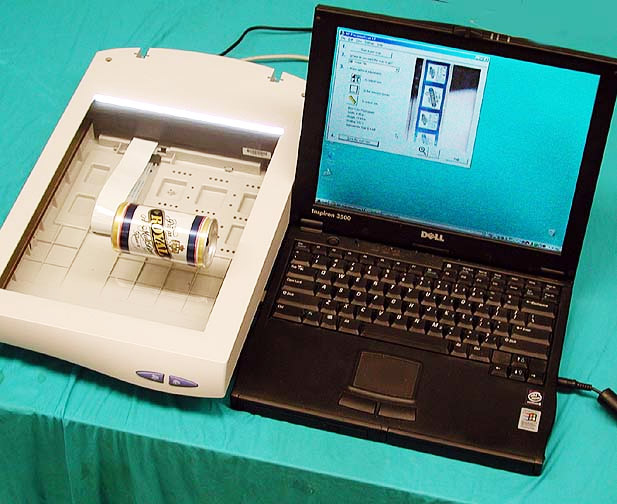
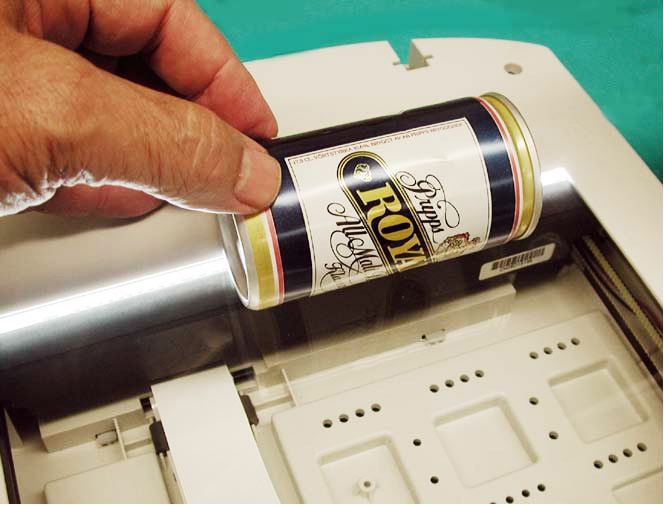 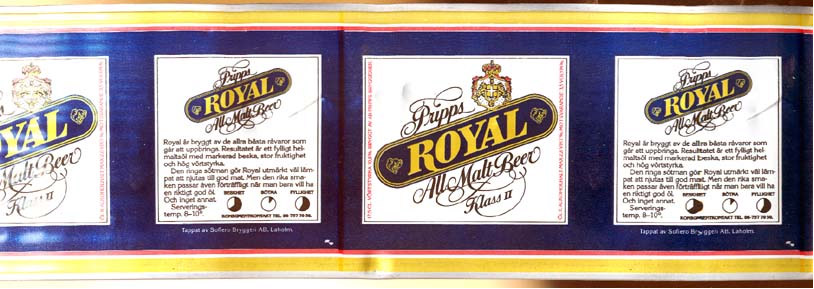 An alternative to using a flat bed scanner is to make a peripheral or rollout record using a standard camera. The premise is, again, that while rotating as it passes across the field of view of the camera will show all sides of itself to the camera' lens and thus the final record will be a 360 degree representation of the object. While this is the case, the record can not be made simply by rotating and translating the object in front of the camera lens. The reason for this is that as he object moves from one side of the frame to the other it must “show” its surface details to the camera lens as if these were standing still. Otherwise a blurry record is made. Analyzing the situation it becomes obvious that if the object is rotated during its translation in such a manner that its direction of rotation matches the direction of motion of the object than there will be significant movement of the surface details resulting in complete blur. What needs to be done is to devise a counter-rotating process whereby the camera, looking at the object's surface, will record the surface sequentially but simply as if it were standing still. This induced counter rotation makes the view through the slot in the translation stage, illustrated below, one that meets the requirements mentioned earlier. When in motion,it is as if the slot moves across a stationary, flat, surface. To make a peripheral record the slot in the carriage box is adjusted so that it is just above the surface of the subject being photographed. In this case a can of soda. The camera, attached to some appropriate support is aimed directly downwards and focused on the surface of the object. Generally the camera can be simply focused on the edges of slot. Then the carriage is moved to one side or the other so that the slot is out of the field of view of the lens. The lens at this point "sees" nothing but the black velvet of one of the masks. The shutter is opened for a couple of seconds and during that time the carriage is rolled on its rollers so that the slot is located on the other side of the camera's field of view. In the process of this movement the rollers below the can force the can to counter-rotate to the travel direction of the carriage making the surface of the can appear to be standing still as the carriage moves from one side of the camera’s field of view to the other. Obviously the black velvet is exposed all over the sensor or film surface for the length of time it take the camera shutter to remain open so that is why it is important to make sure the top of the masks is as dark and non-reflective as can be achieved. The traversing or carriage box can be made of just about any kind of material. On its sides it should have a series of channels that will permit locating the slot defining masks at various heights to accommodate subjects of different diameters. The wheels on which the subject rotates and which allow the whole box to roll from side to side may benefit from having a system whereby their separation can also be adjusted as this may come in handy for objects of different diameters as well. 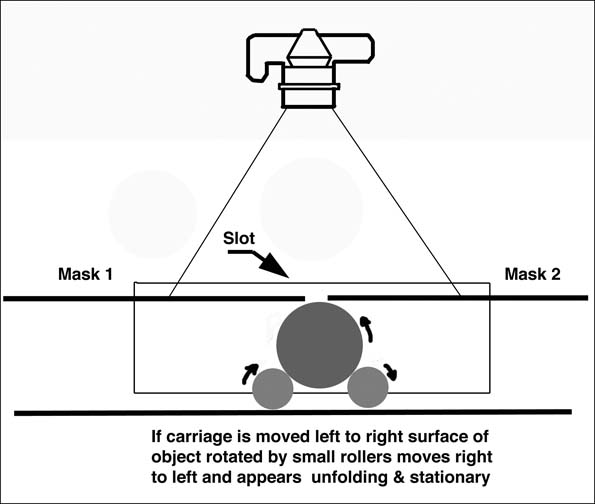
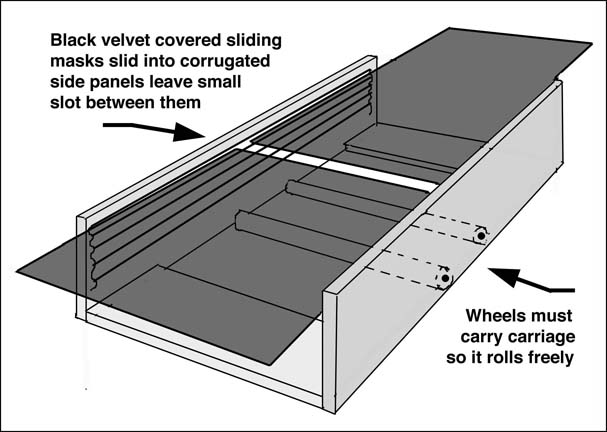
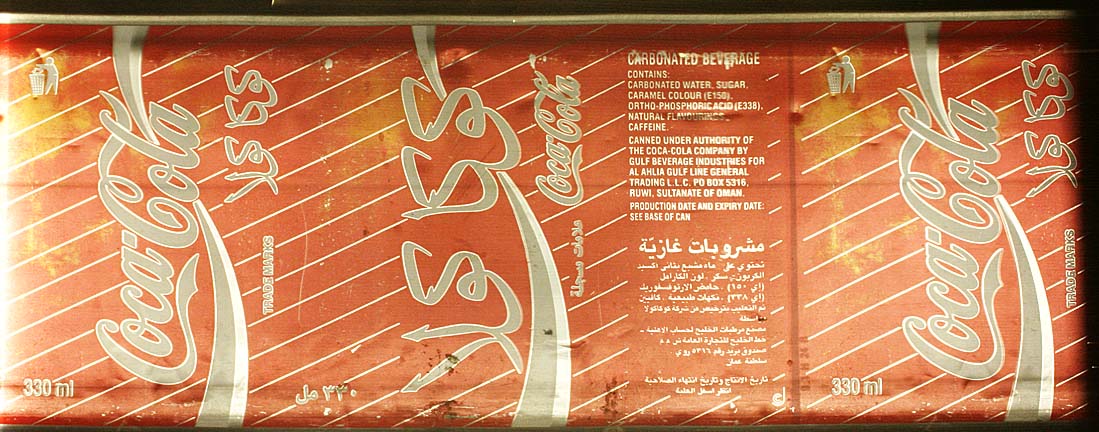 The slot size and the rate at
which the box is moved from side to side will control the local
exposure time of any given point on the rotating subject below the
slot. Imperfections on the edges of the slot will reflect themselves as
streaks along the length of the record.
So, here you have been presented with two alternatives for producing rollout or peripheral records of cylindrical subjects. There are other, more complex methods based on sequential photography of an object and then using software to stitch together portions of each image but the complexity and cost rises when such methods are used. Hopefully the two approaches above will serve you as the basis for improvised personal explorations of this 360 degree approach to recording images. If you have found this item
of interst and wish to communicate with me send me email at:
Andrew Davidhazy, andpph@rit.edu |